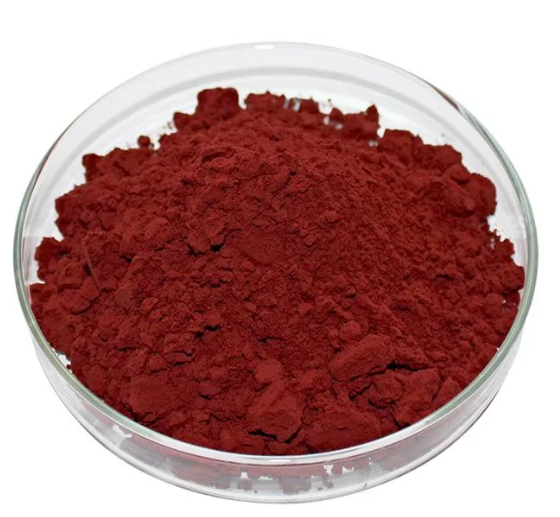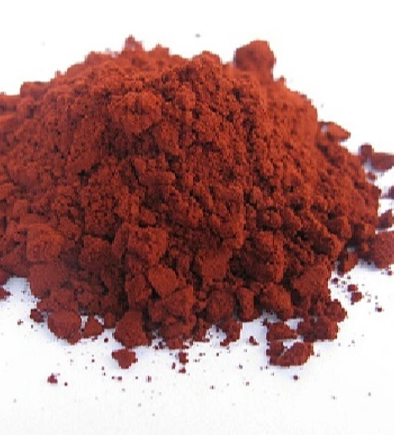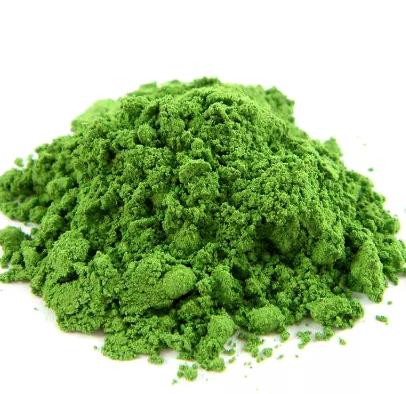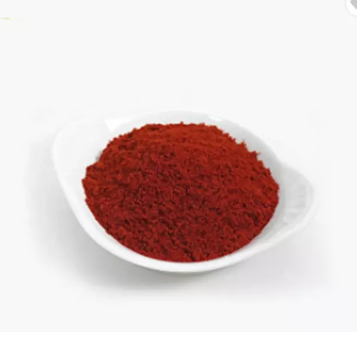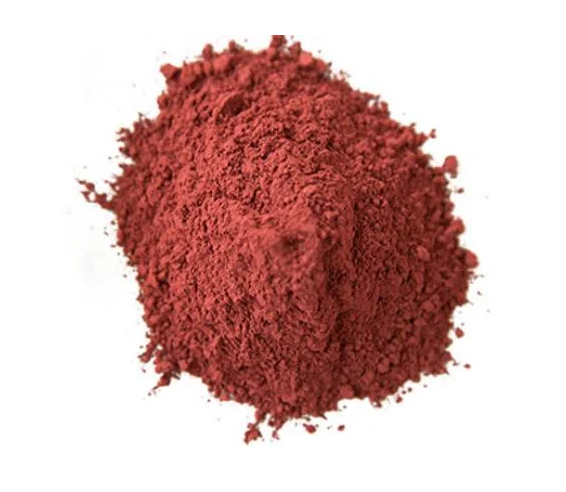

Indigo CAS 482-89-3
——————
CAS number : 482-89-3
molecular formula : C16H10N2O2
EINECS : 207-586-9
——————
Email : info@deshangchem.com
Mobile : +86-13153039501
TEL : +86-531-88752665
CAS number:482-89-3
molecular formula:C16H10N2O2
molecular weight:v
EINECS number:207-586-9
English synonyms:
(2,2’-biindoline)-3,3’-dione;(2,2'-Biindoline)-3,3'-dione;(delta(2,2’(3h,3’h))-biindole)-3,3’-dione;(delta(2,2’)-biindoline)-3,3’-dione;PIGMENT BLUE 66;d&cblueno.6;D+C Blue No. 6;d+cblueno6
Related categories:
Biological dyes; small molecule inhibitors; other biochemical reagents; traditional Chinese medicine reference substances; standards; analytical standards; plant extracts; reference substances; small molecule inhibitors, natural products; pigments; Chinese herbal medicine ingredients; vat dyes; dyes and Pigments; Dyes; Feed Additives; Feed Colorants; Food Additives; Food Colors (Colorants); Food Colors and Preservatives; Colorants and Dyes; Biochemical Reagents; Colorants; Acid Dyes; Inorganic Salts; Biochemical Reagents-Pigments ;Food Additives;Standards, References;Standards-Traditional Chinese Medicine Standards;Chemical Raw Materials;alkaloids;Organics;chemical reagent;pharmaceutical intermediate;phytochemical;reference standards from Chinese medicinal herbs (TCM).;standardized herbal extract;Inhibitors; Auxiliaries; Analytical Reagents - Color Developers; Industrial Dyes - Vat Dyes; Standard Products - Reference Substances; Synthetic Materials Intermediates; Dye Intermediates; Fine Chemical Raw Materials; Pharmaceutical Raw Materials; Pigments; General Biochemical Reagents - Biological Coloring Agents and Chemical Indicators agent; biological dye; chemical reagent-indicator
Introduction:
Indigo is a vat dye with a history of more than three thousand years. During the Warring States Period, Xun Kuang's famous sentence "green, out of blue is better than blue" originated from the blue dyeing technology at that time. "Blue" here refers to cyan, and "blue" refers to the blue grass from which indigo is made. Before the Qin and Han Dynasties, the application of indigo was quite common.
Chemical properties
Melting point | >300 °C(lit.) |
Boiling point | 405.51°C (rough estimate) |
Density | 1.01 g/mL at 20 °C |
Vapor Pressure | 0Pa at 100℃ |
Refractive index | 1.5800 (estimate) |
Flash point | >220℃ |
Storage conditions | Sealed in dry,Room Temperature |
| Solubility | DMSO (Slightly, Heated, Sonicated), DMF (Slightly) |
| Shape | Powder |
| Color index | 73000 |
| Acidity coefficient(pKa) | -3.83±0.20(Predicted) |
Color | Dark blue to violet |
Water solubility | <0.1 g/100 mL |
Merck | 14,4943 |
BRN | 88275 |
| Stability | Stable. Incompatible with strong oxidizing agents. |
InChIKey | COHYTHOBJLSHDF-BUHFOSPRSA-N |
LogP | 2.7 at 23℃ |
| CAS database | 482-89-3(CAS DataBase Reference) |
Blue powder, odorless, slightly soluble in water, ethanol, glycerol and propylene glycol, insoluble in oil. The solubility at 25°C is 1.6% (water), 0.5% (25% ethanol), 0.6% (25% propylene glycol), and the 0.05% aqueous solution is dark blue. Lightfastness. Heat resistance, acid resistance, alkali resistance, salt resistance, oxidation resistance, and bacteria resistance are all poor, and the color fades during reduction, but the dyeing strength is good. Maximum absorption wavelength (610 ± 2) nm. The oral LD50 of rats is 2g/kg, the oral LD50 of mice is 2.5g/kg, and the ADI is 0-5mg/kg (FAO/WHO, 1994).
Indigo aluminum lake is a violet blue fine powder, odorless. Insoluble in water and organic solvents. Light fastness and heat resistance are better than indigo.
Use
● As a food coloring agent, my country stipulates that it can be used in red and green silk, with a maximum usage of 0.02g/kg; in fruit juice (flavored) beverages, carbonated beverages, prepared wine, candy, cakes, colored decoration, dyed cherry cans (systems) For decoration) and green plums, the maximum usage amount is 0.10g/kg; in dipping side dishes, the maximum usage amount is 0.01g/kg.
● Mainly used for dyeing cotton yarn, cotton cloth, wool or silk
● Vat indigo is mainly used for dyeing cotton yarn and cotton cloth, and is the main dye for dyeing blue denim. Also used for wool, silk dyeing and as food coloring and organic pigments.
● Eat blue pigment.
● Mainly used for dyeing cotton yarn, cotton cloth, wool or silk. Pure products are used to make food dyes, or processed into organic pigments.
● For biochemical agents and indicators.
Production method
● An edible natural blue pigment made from the leaves of Polygonum tinctorium. The indigo leaves are piled up, watered frequently, and allowed to ferment for 2 to 3 months to form black clods. After tamping with a mortar, it is called ball indigo, containing 2% to 10% of indigo pigment. Mix wood ash, lime and bran into the ball indigo, add water and mix, heat to 30-40°C, and expose to the air to become blue insoluble indigo.
● Using phenylglycine as raw material, indoxyl is obtained by alkali fusion, and then oxidized with air to obtain the product. There are many methods for synthesizing phenylglycine. my country basically adopts the condensation method of aniline and chloroacetic acid. For the convenience of refining phenylglycine, first obtain its insoluble iron salt to remove impurities, and then convert it into soluble sodium salt and enter the alkali melting process.
● (1) Preparation of indigo. Edible indigo is actually disodium indigo disulfonate, which is sulfonated with concentrated sulfuric acid, diluted with water after sulfonation, neutralized with soda ash, and finally salted out by adding sodium chloride, filtered, washed with water, and dried to obtain the finished product.
(2) Preparation of indigo aluminum lake. Aluminum hydroxide is prepared from aluminum salts such as aluminum chloride and aluminum sulfate and alkalis such as sodium carbonate, and then added to the aqueous solution of citron indigo and precipitated to obtain the product.
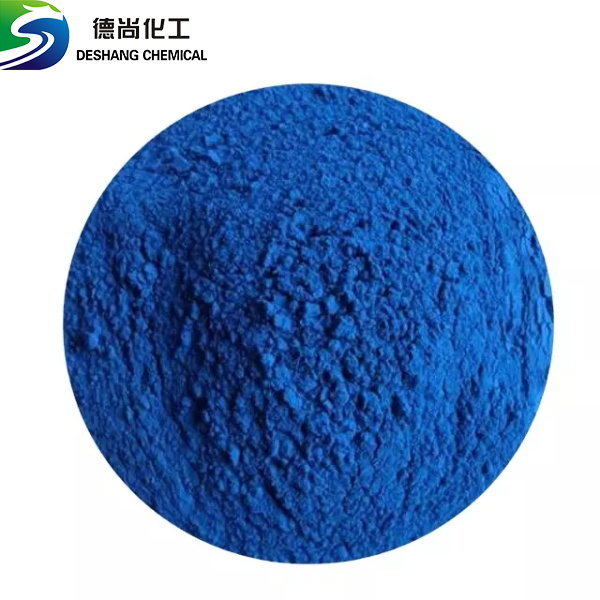
Indigo CAS 482-89-3
CAS number:482-89-3
molecular formula:C16H10N2O2
molecular weight:v
EINECS number:207-586-9
English synonyms:
(2,2’-biindoline)-3,3’-dione;(2,2'-Biindoline)-3,3'-dione;(delta(2,2’(3h,3’h))-biindole)-3,3’-dione;(delta(2,2’)-biindoline)-3,3’-dione;PIGMENT BLUE 66;d&cblueno.6;D+C Blue No. 6;d+cblueno6
Related categories:
Biological dyes; small molecule inhibitors; other biochemical reagents; traditional Chinese medicine reference substances; standards; analytical standards; plant extracts; reference substances; small molecule inhibitors, natural products; pigments; Chinese herbal medicine ingredients; vat dyes; dyes and Pigments; Dyes; Feed Additives; Feed Colorants; Food Additives; Food Colors (Colorants); Food Colors and Preservatives; Colorants and Dyes; Biochemical Reagents; Colorants; Acid Dyes; Inorganic Salts; Biochemical Reagents-Pigments ;Food Additives;Standards, References;Standards-Traditional Chinese Medicine Standards;Chemical Raw Materials;alkaloids;Organics;chemical reagent;pharmaceutical intermediate;phytochemical;reference standards from Chinese medicinal herbs (TCM).;standardized herbal extract;Inhibitors; Auxiliaries; Analytical Reagents - Color Developers; Industrial Dyes - Vat Dyes; Standard Products - Reference Substances; Synthetic Materials Intermediates; Dye Intermediates; Fine Chemical Raw Materials; Pharmaceutical Raw Materials; Pigments; General Biochemical Reagents - Biological Coloring Agents and Chemical Indicators agent; biological dye; chemical reagent-indicator
Introduction:
Indigo is a vat dye with a history of more than three thousand years. During the Warring States Period, Xun Kuang's famous sentence "green, out of blue is better than blue" originated from the blue dyeing technology at that time. "Blue" here refers to cyan, and "blue" refers to the blue grass from which indigo is made. Before the Qin and Han Dynasties, the application of indigo was quite common.
Chemical properties
Melting point | >300 °C(lit.) |
Boiling point | 405.51°C (rough estimate) |
Density | 1.01 g/mL at 20 °C |
Vapor Pressure | 0Pa at 100℃ |
Refractive index | 1.5800 (estimate) |
Flash point | >220℃ |
Storage conditions | Sealed in dry,Room Temperature |
| Solubility | DMSO (Slightly, Heated, Sonicated), DMF (Slightly) |
| Shape | Powder |
| Color index | 73000 |
| Acidity coefficient(pKa) | -3.83±0.20(Predicted) |
Color | Dark blue to violet |
Water solubility | <0.1 g/100 mL |
Merck | 14,4943 |
BRN | 88275 |
| Stability | Stable. Incompatible with strong oxidizing agents. |
InChIKey | COHYTHOBJLSHDF-BUHFOSPRSA-N |
LogP | 2.7 at 23℃ |
| CAS database | 482-89-3(CAS DataBase Reference) |
Blue powder, odorless, slightly soluble in water, ethanol, glycerol and propylene glycol, insoluble in oil. The solubility at 25°C is 1.6% (water), 0.5% (25% ethanol), 0.6% (25% propylene glycol), and the 0.05% aqueous solution is dark blue. Lightfastness. Heat resistance, acid resistance, alkali resistance, salt resistance, oxidation resistance, and bacteria resistance are all poor, and the color fades during reduction, but the dyeing strength is good. Maximum absorption wavelength (610 ± 2) nm. The oral LD50 of rats is 2g/kg, the oral LD50 of mice is 2.5g/kg, and the ADI is 0-5mg/kg (FAO/WHO, 1994).
Indigo aluminum lake is a violet blue fine powder, odorless. Insoluble in water and organic solvents. Light fastness and heat resistance are better than indigo.
Use
● As a food coloring agent, my country stipulates that it can be used in red and green silk, with a maximum usage of 0.02g/kg; in fruit juice (flavored) beverages, carbonated beverages, prepared wine, candy, cakes, colored decoration, dyed cherry cans (systems) For decoration) and green plums, the maximum usage amount is 0.10g/kg; in dipping side dishes, the maximum usage amount is 0.01g/kg.
● Mainly used for dyeing cotton yarn, cotton cloth, wool or silk
● Vat indigo is mainly used for dyeing cotton yarn and cotton cloth, and is the main dye for dyeing blue denim. Also used for wool, silk dyeing and as food coloring and organic pigments.
● Eat blue pigment.
● Mainly used for dyeing cotton yarn, cotton cloth, wool or silk. Pure products are used to make food dyes, or processed into organic pigments.
● For biochemical agents and indicators.
Production method
● An edible natural blue pigment made from the leaves of Polygonum tinctorium. The indigo leaves are piled up, watered frequently, and allowed to ferment for 2 to 3 months to form black clods. After tamping with a mortar, it is called ball indigo, containing 2% to 10% of indigo pigment. Mix wood ash, lime and bran into the ball indigo, add water and mix, heat to 30-40°C, and expose to the air to become blue insoluble indigo.
● Using phenylglycine as raw material, indoxyl is obtained by alkali fusion, and then oxidized with air to obtain the product. There are many methods for synthesizing phenylglycine. my country basically adopts the condensation method of aniline and chloroacetic acid. For the convenience of refining phenylglycine, first obtain its insoluble iron salt to remove impurities, and then convert it into soluble sodium salt and enter the alkali melting process.
● (1) Preparation of indigo. Edible indigo is actually disodium indigo disulfonate, which is sulfonated with concentrated sulfuric acid, diluted with water after sulfonation, neutralized with soda ash, and finally salted out by adding sodium chloride, filtered, washed with water, and dried to obtain the finished product.
(2) Preparation of indigo aluminum lake. Aluminum hydroxide is prepared from aluminum salts such as aluminum chloride and aluminum sulfate and alkalis such as sodium carbonate, and then added to the aqueous solution of citron indigo and precipitated to obtain the product.
Team Presentation

